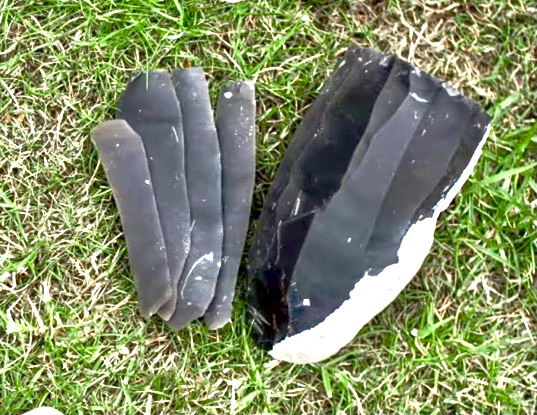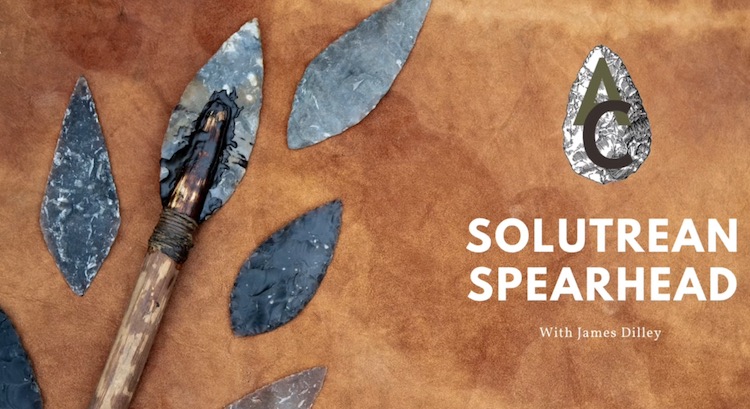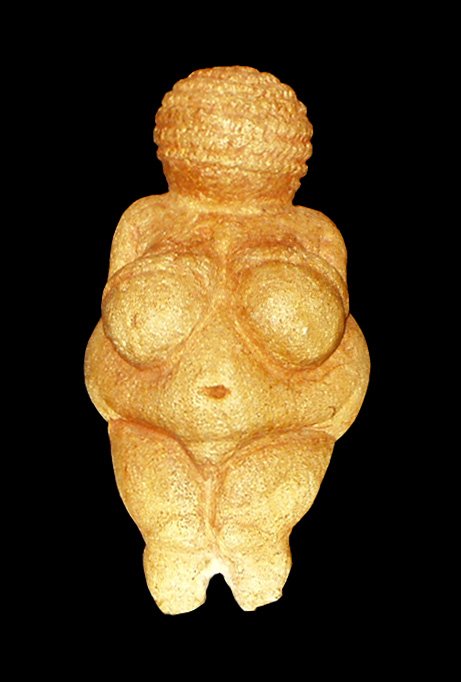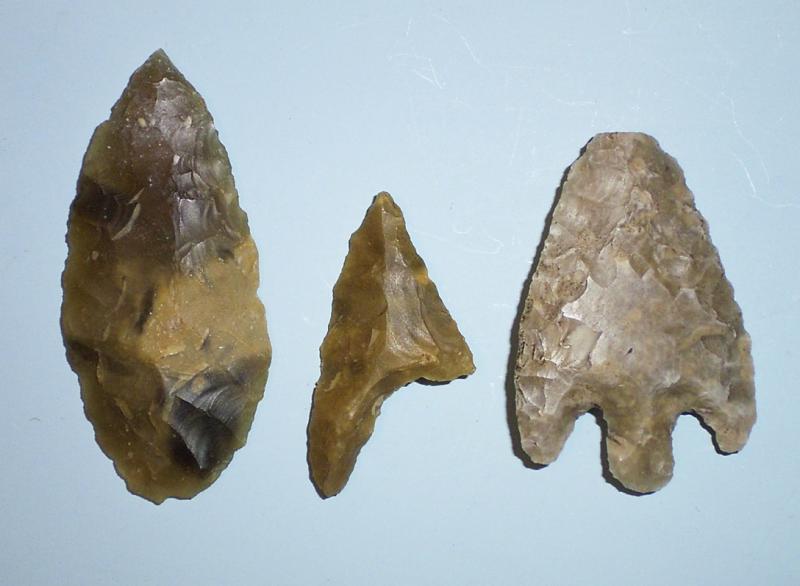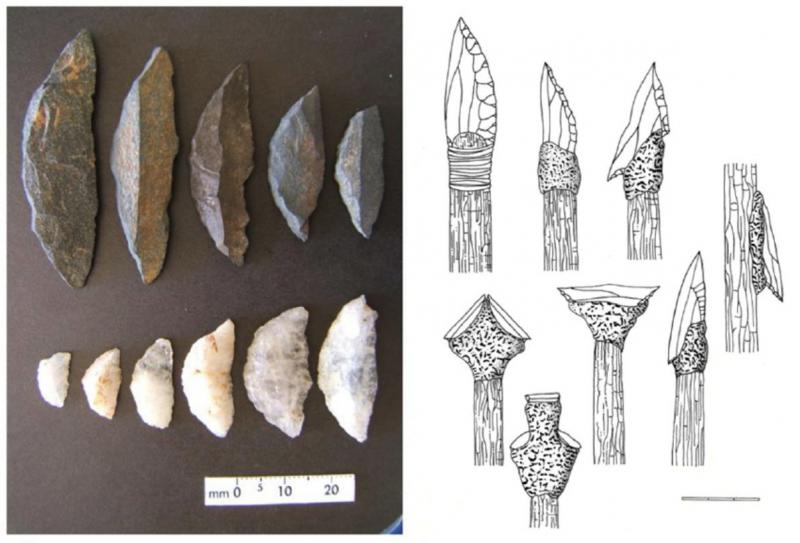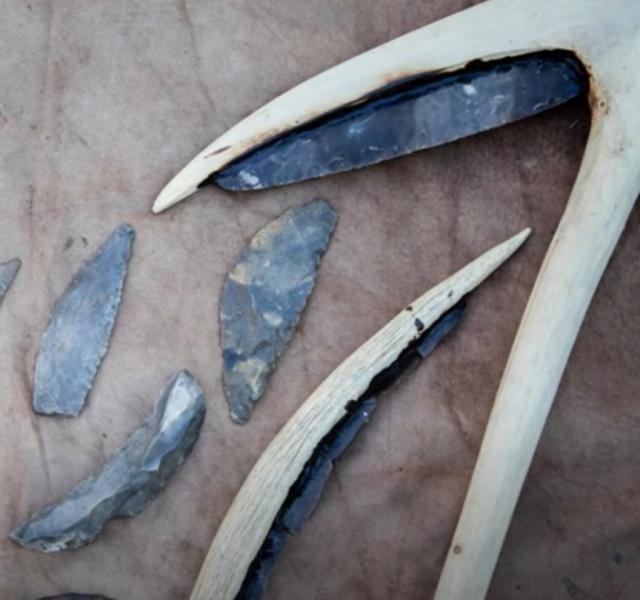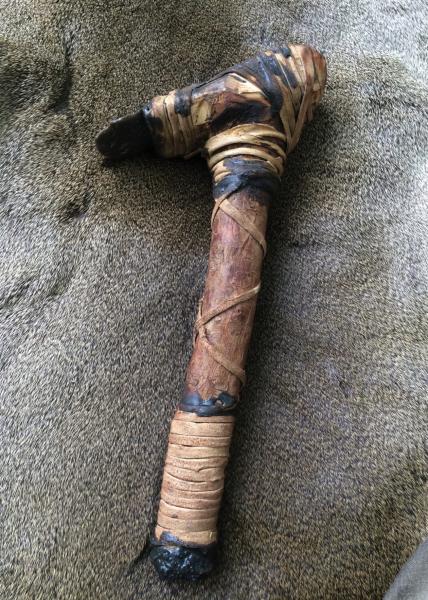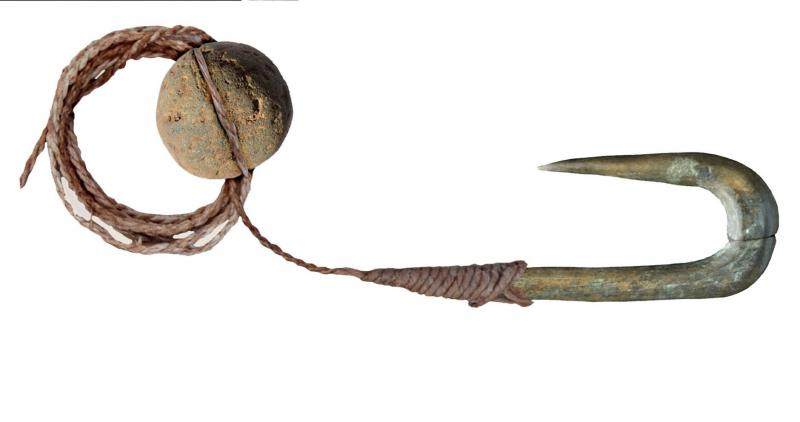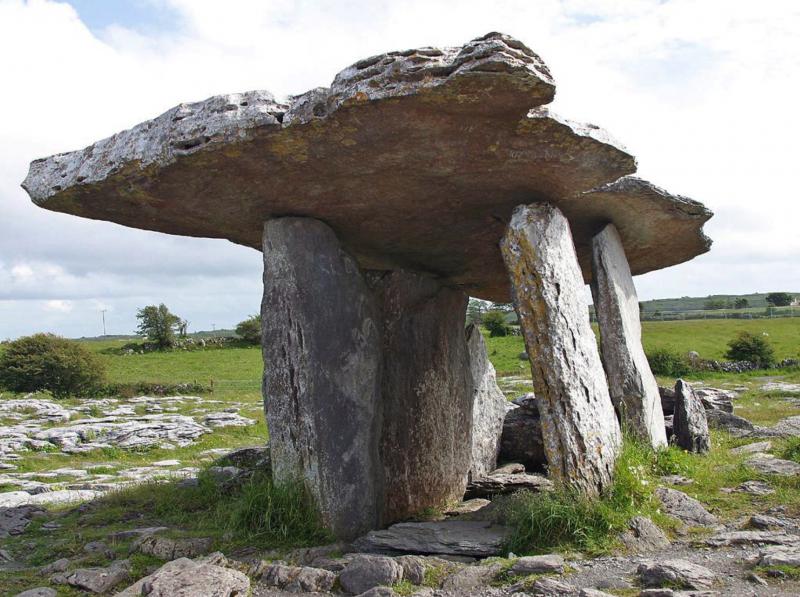
|
Paleolithic Stone Tools
Jean Vaucher (August 2022)
|
- Index
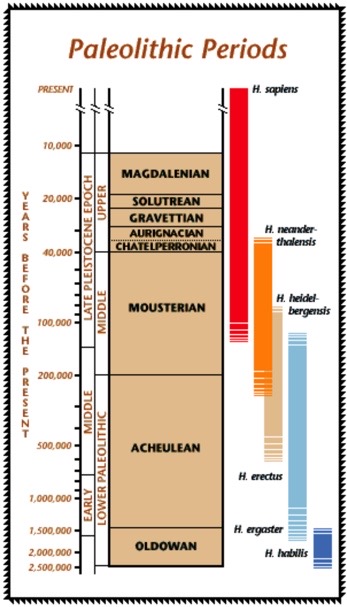
Stone tools provide the oldest evidence of intelligent activity by our ancestors. The first, dated about 2.4 million years ago, were discovered in Ethiopia; created by Homo Habilis who simply smashed suitable stones together to create flakes with sharp cutting edges. As humans evolved into progressively more intelligent species, their tool-making skills evolved through several stages or industries; each roughly associated with a distinct homo species:
Topics
- Oldowan Tools: Habilis
- Acheulean Tools: Erectus & Heidelbergensis
- Mousterian Tools: Neanderthals
- Upper Paleolithic: Homo Sapiens
- Mesolithic Stone: Homo Sapiens
- Making Stone Tools (short video)
- Handprint
- Pleistocene Project
- Tools for sale: Catalogue... good source of pictures !
Oldowan tools

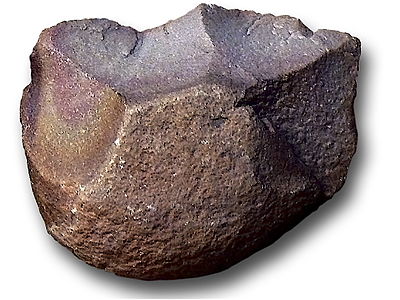
Click for more
These tools, called Oldowan after an early site in Tanzania, were made by a single blow of one rock against another to create a sharp-edged flake. But this only worked with certain crystalline stones such as basalt, quartz or chert which split like glass; the prevalence of these tools indicates that early humans were smart enough to recognize the differences between types of rock.
Several flakes could be struck from a single "core" stone. The best flakes were used primarily as cutters, probably to dismember game carcasses or to strip tough plants. Other flakes along with the core were then discarded. Only with later technologies, would there be attempts to improve the split stones into more useful shapes.
Fossils of crushed animal bones indicate that stones were also used to break open marrow cavities. And Oldowan deposits include pieces of bone or horn showing scratch marks that indicate they were used as diggers to unearth tubers or insects.
- Oldowan tools, Handprint

Handaxe
The Acheulean Industry

The Acheulean tool industry first appeared around 1.5 million years ago in East Central Africa. These tools are typically found with Homo erectus remains. Although the industry was developed in Africa, the style is named a site in northern France where the first example was discovered.
The key innovations were (1) chipping the stone from both sides to produce a symmetrical (bifacial) cutting edge, and (2) the shaping of an entire stone into a recognizable and repeated tool form. Concern had shifted from flake generation to creating larger tools aimed at different uses; Manufacture had become a complex process requiring training, dexterity and patience.
About 1.0 million years ago, one particular form, the Hand Axes began appearing. These were large distinctive teardrop shaped blades which became the longest used tool in human history.
By 500,000 years ago the Acheulean methods had penetrated into Europe, primarily associated with Homo heidelbergensis, where they continued until about 200,000 years ago. The industry spread as far as the Near East and India, but apparently never reached Asia, where Homo erectus continued to use Oldowan tools right up the end.
Mousterian tools

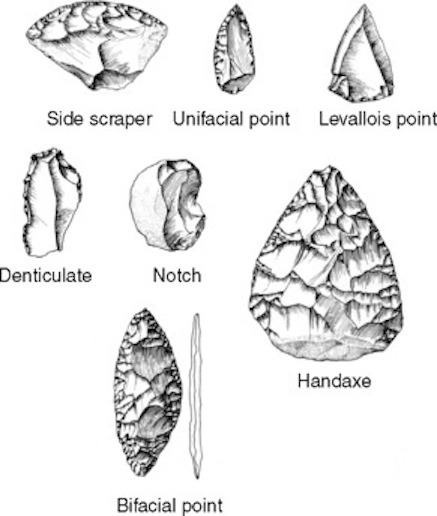
Click to enlarge
Many of the tools were manufactured using a new Levallois technique. The process requires preliminary shaping of a core to get a face with the required tool outline. Then a series of flakes could be tapped off rapidly, all with the proper shape. This technique was more efficient than earlier methods.
Upper Paleolithic tools

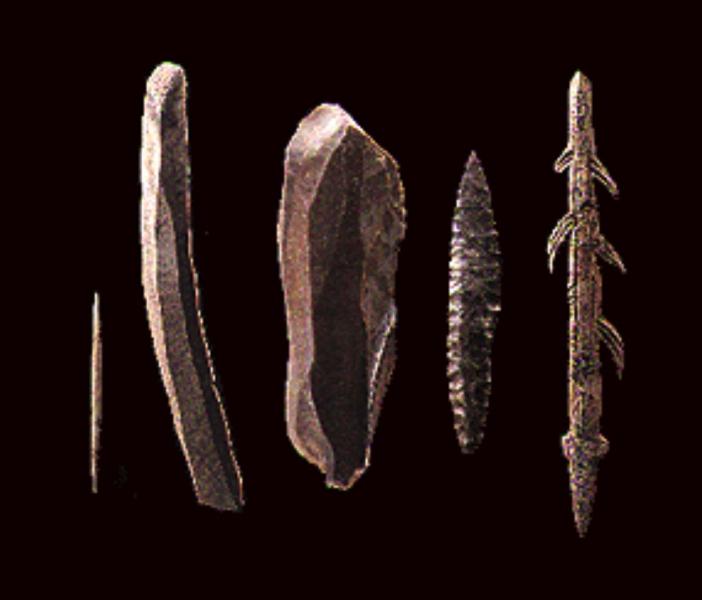
- Aurignacian (40 Kya - 28 Kya)
- Gravettian (28 Kya - 22 Kya)
- Solutrean (22 Kya - 19 Kya)
- Magdelanian (18 Kya - 12 Kya)
The following table shows how, over time, prehistoric man got more efficient at turning flint rocks into useable cutting tools. [ from Dennis O'Neil ]
| Tool
Tradition and Tool Category |
Length of Cutting Edge Per Pound of Stone |
Improvement over Previous Technology |
|---|---|---|
|
Oldowan choppers
-- Lower Paleolithic (Homo habilis) |
~ 2
inches (5 cm.) |
|
|
Acheulian hand axes
-- Lower Paleolithic (Homo erectus) |
~ 8
inches (20 cm.) |
x 4 |
|
Mousterian flake tools
-- Middle Paleolithic (Neandertal) |
~ 2 1/3
feet (100 cm.) |
x 5 |
|
Blade flake tools --
Upper Paleolithic
(modern humans) |
~ 10-39 feet (300-1200 cm.) |
x 3 to x 12 |
| Sources: Watson, W. (1968) Flint Implements: An Account of Stone Age
Techniques and Cultures; and Hester, J. and J. Grady (1982) Introduction to Archaeology. |
The brief Solutrean period (22,000 to 19,000 years ago) introduced very elegant tool designs made possible by heating and suddenly cooling flint stones to shatter them in carefully controlled ways. J. Dilley Video
Around this time, primitive man developed a taste for art. Ivory beads turn up as burial ornaments, and stone "Venus figurines" appear. These are tiny voluptuous female figures - like one shown below - that could easily be carried by nomadic people. Wikipedia
Later, in the Magdalenian period (18,000 to 12,000 years ago), knappers started producing microliths: delicate flaked stones for arrows and spears, multibarbed harpoon points, and spear throwers made of wood, bone or antler.
Post Paleolithic

By the time, Sapiens had become the dominant species, efficient stone-working techniques
had been largely mastered. What changed afterwards was the transition from nomadic existence to settled group existence as farmers or fishermen. These new activities required different sorts of tools: in particular we note sickles for the harvest of cereal,
hafted axes for the felling of trees, adzes for woodworking and shaped weights for fish lines and nets.
Finally, the most spectacular accomplishments of the Stone Age would happen after the creation of settlements but before the Age of Metal: dolmens around the world and monuments like Stonehenge or the Pyramids - more the result of spiritual concerns, political will and transportation technology than any new "stone" technique.
